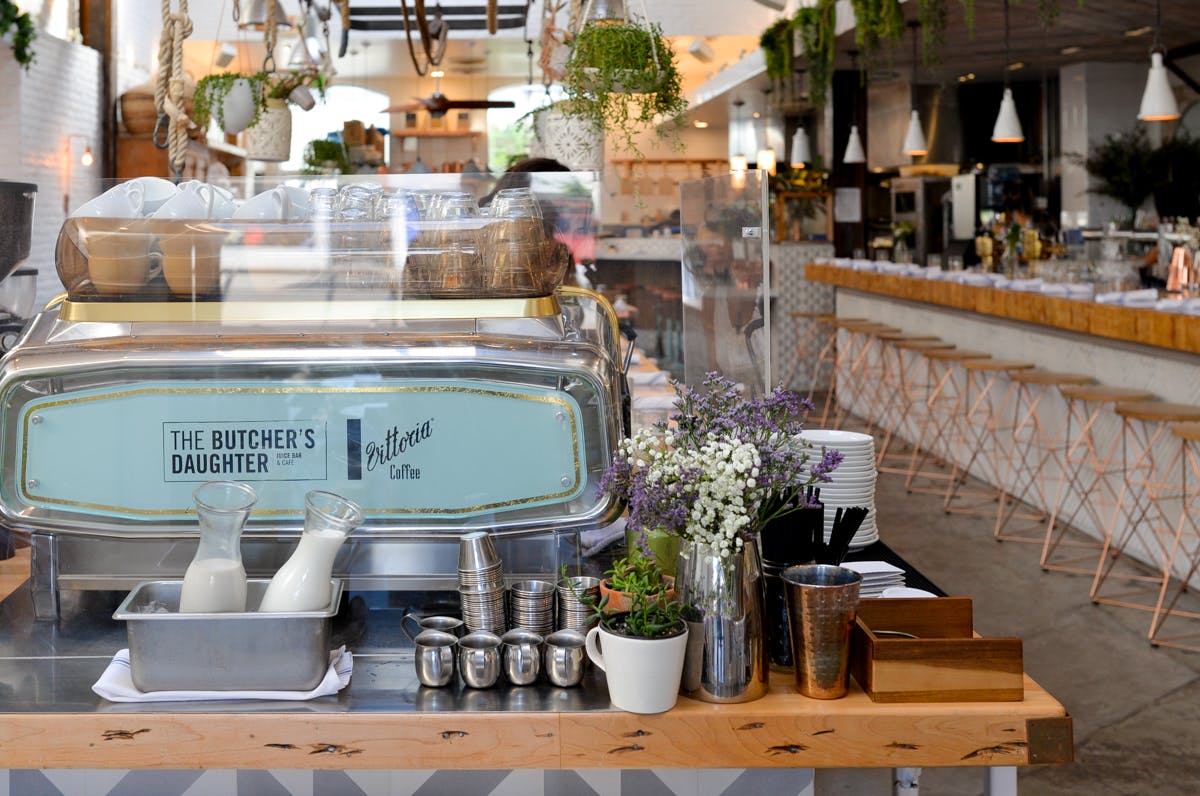
Table of contents
Hungry families everywhere face a recurring dilemma: dining out is quickly becoming unaffordable. While fast food offers lower prices, it lacks the ambiance many seek when looking for a night out together. This is where midscale restaurants hit the sweet spot – and why they’re attracting millions of Americans every week. These are the Denny's, IHOP's, and Cracker Barrels that dot every highway and strip mall, serving up comfort food at moderate prices with a relaxed, family-friendly atmosphere.
Midscale restaurants have become fixtures in communities across the United States, particularly popular among budget-conscious diners who want more than McDonald's but aren't seeking fine dining restaurant experiences. In fact, these establishments are generating a revenue of $140 billion each year in the United States alone (1). For restaurant operators in the restaurant industry, understanding this category is essential when choosing a business model that aligns with your goals and market.
This guide breaks down what defines midscale restaurants, how they compare to other dining establishments and restaurant types, and which franchise brands lead the category. We'll also examine how technology supports operational success, particularly for counter-service and hybrid models where solutions like OtterPOS excel, helping operators make informed decisions about which systems best fit every type of service format.
What is a midscale restaurant?
A midscale restaurant is a casual dining establishment that hits the pricing bullseye between fast food and upscale dining. These dining establishments typically charge $15 to $30 per person and serve familiar, crowd-pleasing American-style menu items like pancakes, burgers, salads, and other comfort food classics. What sets them apart is their approachable atmosphere – think booth seating, relaxed service, and menus designed for families and everyday diners whose overarching goal is a sit-down experience.
Midscale restaurants operate through various service models. Traditional formats rely on full table service, while contemporary approaches may blend counter ordering with table delivery or incorporate digital ordering systems for takeout and dine-in options. Restaurant chains dominate this arena, offering the consistency and accessibility that keeps customers coming back for a casual, but predictable, experience.
The category spans both classic and evolving concepts:
Denny's: The 24/7 diner icon serving Grand Slam breakfasts and comfort food to families, travelers, and late-night crowds since 1953.
Cracker Barrel: Southern comfort meets country store nostalgia, with scratch-made biscuits and chicken n' dumplins drawing loyal customers since 1969.
IHOP: The pancake specialists who've been stacking fluffy breakfast favorites and serving all-day breakfast since 1958, with nearly 1,700 locations nationwide.
This positioning between fast food convenience and upscale experiences makes midscale restaurants essential players in America's dining landscape, bridging the gap between quick-service restaurants and fine dining establishments.

The operational advantages become clear when you consider market reach. Midscale concepts like Denny's and IHOP build sustainable businesses in suburban strip malls, highway stops, and smaller cities where upscale restaurants struggle to find enough customers willing to pay higher prices for special occasion dining.
Mini Case Example: Denny's Market Resilience Denny's exemplifies midscale success across diverse markets. While upscale restaurants depend on affluent neighborhoods and special occasions, Denny's thrives everywhere from truck stops to college towns. Their 24/7 operations, consistent $12-18 check averages, and rapid table turnover generate steady revenue streams that weather economic fluctuations better than high-end concepts.
How to choose the right restaurant model for your business
Selecting the best restaurant model means balancing your vision with market realities. Midscale restaurants, known for their mix of value pricing and comfortable atmosphere, are just one choice among several popular options in the restaurant industry, including fast casual, quick-service restaurants (QSRs), and upscale concepts.
Decision-Making Framework
Target Audience: Are you serving busy families looking for affordable sit-down meals, professionals grabbing quick lunches, or diners celebrating special occasions? Your audience shapes everything from menu design to service style and dining room layout.
Location & Traffic: Highway locations favor brands like Denny's with broad appeal and extended hours. Urban areas might support fast-casual concepts, while affluent suburbs can sustain upscale dining and steakhouse concepts.
Capital Requirements: Midscale restaurants typically require moderate investment: higher than quick-service restaurants due to larger spaces and equipment, but lower than upscale concepts that demand premium finishes and extensive wine programs.
Staffing Strategy: Full table service demands experienced servers and higher labor costs. Counter-service and hybrid models reduce staffing complexity while maintaining the midscale dining experience.
Quick Decision Guide:
• If your target market is families and seniors seeking affordable sit-down meals → Consider midscale concepts
• If you're near highways, strip malls, or suburban areas → Midscale restaurants fit well
• If you have moderate startup capital ($200K-500K range) → Midscale offers good ROI potential
• If you want to minimize labor complexity → Choose counter-service or hybrid midscale formats
• If you're in a high-traffic urban area with time-pressed customers → Fast casual might be better
• If you have significant capital and prime real estate → Upscale concepts could work
• If you're choosing counter-service or hybrid midscale → Technology like OtterPOS becomes essential
Technology Integration
Modern midscale success increasingly depends on operational efficiency across the supply chain. Counter-service and hybrid models benefit significantly from integrated POS systems that streamline digital orders, automate menu updates, and provide real-time analytics. Solutions like OtterPOS excel in these formats, centralizing online and in-store orders without the complexity required for full-service table management systems.
Success comes from aligning your concept with your market reality and operational strengths – then choosing technology partners that enhance rather than complicate your service model.
Top midscale restaurant examples in the U.S.

America's most successful midscale restaurant chains have mastered the art of consistent, accessible dining that keeps customers coming back. Here are the category leaders that define what midscale success looks like in today's competitive eatery landscape:
Denny's | Founded 1953 | Average Check: $12–$18
The 24/7 diner icon serves Grand Slam breakfasts and comfort classics to families, travelers, and late-night crowds. With flexible counter/hybrid service formats, Denny's exemplifies how modern midscale operations can leverage technology platforms for enhanced efficiency.
Signature Dishes: Grand Slam breakfast, burgers, all-day breakfast items
Unique Appeal: Round-the-clock availability and consistent comfort food
IHOP | Founded 1958 | Average Check: $15–$16
Nearly 1,700 locations strong, IHOP built its empire on stacked pancakes and all-day breakfast. Their approachable pricing and family-friendly atmosphere make them a go-to for value-conscious diners seeking quality breakfast and lunch entrees.
Signature Dishes: Buttermilk pancakes, omelets, Cinn-A-Stack pancakes
Unique Appeal: Pancake perfection and breakfast expertise
Cracker Barrel | Founded 1969 | Average Check: ~$15
Southern comfort meets country store nostalgia with scratch-made biscuits, chicken n' dumplins, and a unique retail experience. Their full-service restaurant model and moderate pricing have created a fiercely loyal customer base.
Signature Dishes: Chicken n' dumplins, scratch-made biscuits, country fried steak
Unique Appeal: Nostalgic atmosphere and authentic Southern fare
Bob Evans | Founded 1946 | Average Check: $12-18
Rural roots and breakfast focus define this Midwest and Southern favorite. Known for farm-fresh positioning and homestyle comfort food, Bob Evans delivers classic American meals at approachable prices with a family-style vibe.
Signature Dishes: Sausage gravy and biscuits, country fried steak, farm-fresh eggs
Unique Appeal: Farm-fresh positioning and regional comfort food
Golden Corral | Founded 1973 | Average Check: $12-16
The buffet leader with carving stations and all-you-can-eat variety. Perfect for large groups and families seeking maximum choice at moderate price points, offering everything from appetizers to desserts.
Signature Dishes: Endless buffet, carving station meats, salad bar
Unique Appeal: Unlimited variety and value
Perkins | Founded 1958 | Average Check: $14-20
Breakfast favorites, bakery items, and hearty American fare served in a laid-back atmosphere. Known for their extensive pie selection and comfort food classics that rival concepts like Applebee's in the casual dining space. Signature Dishes: Pancakes, pies, comfort food classics
Unique Appeal: Bakery specialties and all-day dining
Performance Leaders According to Nation's Restaurant News, IHOP, Cracker Barrel, and Denny's consistently top systemwide sales rankings among midscale chains. These brands demonstrate how counter-service and hybrid models can leverage digital platforms to streamline operations. Denny's is a prime example of technology-enhanced midscale success.
What makes midscale restaurants successful?
Midscale restaurants that thrive share three fundamental success factors that separate winners from the struggling concepts you see closing down every quarter in the challenging restaurant industry.
Consistency Across Locations Arrive at any successful midscale chain and you know exactly what to expect. Whether you're grabbing pancakes at an IHOP in Ohio or a Grand Slam at Denny's in Nevada, the experience feels familiar. This isn't an accident – it's deliberate standardization of menu items, service protocols, and even restaurant layouts that builds customer trust and drives repeat visits across franchise locations.
Efficient Staff Training and Service Standards The best midscale operators recognize that complexity kills profitability. They design straightforward menus that kitchen staff can execute consistently and implement comprehensive training programs that get new hires productive quickly. Efficient staff training focuses on quick, friendly, and accurate service delivery. Counter-service and hybrid models particularly excel here, reducing labor complexity while maintaining the sit-down dining experience customers want – meaning staff can master operations faster and deliver consistent service standards.
Strong Operational Systems Modern midscale success increasingly depends on operational technology that enhances rather than complicates daily operations in these high-quality dining establishments. Counter-service and hybrid formats benefit significantly from integrated POS systems that centralize online and in-store orders, automate reconciliation, and provide actionable data insights. Solutions like OtterPOS excel in these environments, delivering the efficiency gains that drive profitability.
Leading operators like Denny's demonstrate how the right technology partnership creates measurable impact. When midscale restaurants implement comprehensive operational platforms, they typically see substantial improvements in order accuracy, sales velocity, and customer satisfaction. This is proof that investing in the right systems pays dividends in competitive markets.
Ready to optimize your midscale operation? Explore how OtterPOS, Analytics, Marketing, and Loyalty solutions can streamline your workflows and drive measurable growth in your restaurant.

Book a demo with Otter
It’s time to enhance your operations with Otter’s all-in-one restaurant platform. Book time with our sales team to learn more.

Book a demo to see how Otter’s all-in-one platform can help your restaurant thrive.